This piece is part of the Taiwan-U.S. Quarterly Analysis series, which features the original writings of experts from the United States and Taiwan, with the goal of providing a range of perspectives on developments relating to Taiwan.
The outbreak of the COVID-19 pandemic brought cities across much of the globe under lockdown, forcing businesses to close and people to stay at home. However, in contrast to most parts of the world, people in Taiwan have been able to maintain many of their freedoms, retaining key elements of a normal life under certain social distancing rules. It even managed to hold free and fair presidential and legislative elections in January, without notable effects on public health. The successful story of Taiwan’s fight against COVID-19 has garnered it worldwide praise as a model, with Taiwan showing itself to be a “beacon of democracy” in many ways. After containing the pandemic following the election, Taiwan has earned the world reputation of being a “nation of resilience.”
Taiwan’s democratic institutions have been central to its efforts to contain the coronavirus, which have involved a combination of preventive awareness, concerted government efforts, public diligence, and a great deal of hard work from health care workers and other essential actors. As a result, Taiwan has not only contained the virus within its borders; it has also taken actions to help others.
But as the challenges associated with COVID-19 on the global economy unfold, it is clear that the pandemic has not only undermined economic growth for most countries, but also shifted global supply chains. The risks Taiwan will face ahead are multifaceted. Many leaders are preoccupied with post-pandemic economic bailouts and rejuvenation, exploring solutions to tackle rising unemployment and save small and medium businesses in particular. For her part, the newly reelected President Tsai Ing-wen and her administration have laid out a future blueprint to address the challenges Taiwan faces.
The effects of COVID-19 on Asian economies
Let’s start with some indicators. From January to May of this year, most Asian economies have experienced economic slowdowns, due largely to COVID-19. China’s economic growth rate declined by 7.7%, South Korea’s by 11.2%. Japan’s economic growth decreased by 8.4% in the first four months of the year, and Singapore’s by 6.9%. However, Taiwan was able to maintain an average growth rate of 1.5% in the first five months of 2020.
Even more surprising, in April, Taiwan’s export orders rose more than 2% compared to last year, marking the second consecutive month of a year-on-year increase, even though the global economy was hurt badly by the pandemic. The increase in orders for Taiwanese high-tech device exports helped offset the impact of the virus on traditional industrial firms during this time.
The restriction on people’s routine activities and business interactions, as well as the resulting increase in remote work and online learning, boosted the demand for 5G communication applications, high-performance computing devices, electronic components, other information communications technology-related products, and video components.
Pre-COVID structural changes to cross-Strait ties
A major factor in Taiwan’s economic sustainability is the continuing diversification strategy adopted by the Taiwanese businesses in China. In fact, this trend started way before the pandemic and before recent U.S.-China trade frictions. Starting roughly in 2010, there has been an incremental decrease of foreign direct investment from Taiwan to China, despite some fluctuations in 2015. This has something to do with the structural changes to cross-Strait economic relations.
There are several factors that have led to the gradual retreat of Taiwanese businesses from the Chinese market. Rising labor wages, together with stricter environmental regulations in China, have propelled Taiwanese companies to consider pivoting to other markets. The stagnation of political dialogue between the Tsai government in Taiwan and its Chinese counterpart in the past four years has also created uncertainties for Taiwanese businesses. Finally, the U.S.-China trade war and those countries’ competition for future technology supremacy has further accelerated the trend of Taiwanese companies pulling their business out of China, or setting up alternatives outside the Chinese market.
Although Washington and Beijing reached a so-called “Phase One” trade agreement in January 2020, the remaining uncertainties between the two major powers has had a psychological impact on Taiwanese companies in China. Moreover, the trade friction between the U.S. and China has sped up the realignment of the cross-Strait supply chain. Taiwan’s exports to China decreased nearly 8% in 2019, while Taiwan’s export to the U.S. grew 18%.
To lessen the uncertainties for Taiwanese companies, the Tsai administration first introduced the so-called “New Southbound Policy” (NSP) four years ago as a strategic guideline for diversifying Taiwan’s overseas investment to other neighboring countries and deepening people-to-people connectivity with those countries. The NSP also targeted the areas of tourism, education exchanges, medical and health training, as well as natural disaster and disease prevention cooperation.
Then, it provided more incentives to attract Taiwanese businesses in China to return to Taiwan for reinvestment. For example, the government took actions to help the companies solve problems associated with land, labor, water, and electricity supply. Taiwan’s cabinet also streamlined the procedure of application. More measures were targeted to assist local small and medium enterprises. At present, the total amount of money reinvested in Taiwan is over $30 billion.
COVID’s impact on cross-Strait economic ties
The COVID-19 pandemic has had slight and short-term impacts on the cross-Strait situation. According to the Ministry of Finance of the Republic of China (Taiwan), Taiwan’s exports to China (including Hong Kong) from January to May 2020 increased 10.3%, compared to the numbers during those months last year. China accounts for 41.5% of Taiwan’s overall exports value in this period. Meanwhile, Taiwan’s exports to the NSP countries has reached their lowest point in the last 10 years. However, this phenomenon should not be over-emphasized, given that most countries in South and Southeast Asia were under lockdown. Meanwhile, China partially resumed some business operations in February, which triggered increased exports of intermediary goods from Taiwanese companies, mostly electronic components. Once the economic activities of the NSP countries return to normal, it is likely the trend will be reversed.
Having said that, there are more uncertainties when the world enters the post-COVID era. It is unclear when or how countries will regain economic momentum. The continued U.S.-China wrestling has cast a shadow on the global order. It’s getting harder and harder for countries to pursue strategic autonomy amid potential economic “decoupling” between Washington and Beijing. Most importantly, China’s increase of military, diplomatic, and economic pressures on Taiwan — and its refusal to resume official dialogue with the Tsai administration — has been destructive to the peace and stability of the Taiwan Strait and the Asia-Pacific order.
The Tsai administration’s strategy
Facing a potential transformation of the global supply chain following U.S.-China trade frictions and the COVID-19 pandemic, President Tsai in her May 20 inaugural address emphasized the need to utilize Taiwan’s strengths in the semiconductor and information communications technology industries to secure a central role in the global supply chain.
She highlighted six strategic industries, in particular, that would bolster efforts to upgrade Taiwan’s industries and forge close ties internationally. Her pledges to strengthen the integration of biotech and medical technology, as well as to develop Taiwan’s national defense and strategic industries between the military and civilian sectors and to develop renewable energy technologies, demonstrates an ongoing commitment for Taiwan to connect to the world market.
Learning from lessons of the pandemic, which highlighted the risk of medical supply shortages, Tsai stressed the importance of establishing strategic stockpile industries that can ensure the steady provision of critical supplies.
To continue such efforts to strengthen Taiwan’s economy, Taiwan should advance its trade and economic ties with Asian partners in the post-COVID-19 era. Taiwan has already signed free trade agreements with Singapore and New Zealand, and has upgraded its bilateral investment protection agreements with India, Thailand, and the Philippines. It also seeks to negotiate bilateral trade deals with other regional players, such as Japan, and explore opportunities for joint investment in developing markets. Taiwan’s government has also set the goal of participating in the Comprehensive and Progressive Agreement for Trans-Pacific Partnership (CPTPP), as a top priority. With the global supply chains undergoing certain transformations, the environment could offer more chances for Taiwan to deepen its economic ties with the region.
Most importantly, there are plenty of opportunities for Taiwan to further engage the world community in the post-COVID-19 era through enhanced cooperation in the fight against transnational diseases and vaccine development. Continuing to bid for membership in major international organizations remains a top priority for Taiwan’s foreign policy, as well as consolidating existing mechanisms such as the Global Cooperation Training Framework (GCTF), which the U.S. and Taiwan established years ago. The GCTF provides timely and important channels for deepening cooperation between Taiwan and other like-minded partners. Japan, Australia, Sweden, and other European countries have participated in GCTF programs to share experiences on many transnational issues.
Lessons learned from the pandemic
Taiwan’s success in dealing with the COVID-19 pandemic is a testament to its democratic norms and institutions. The government demonstrated transparency and honesty, as well as efficiency and good governance. Leaders avoided politicizing the issue, candidly shared information and experiences, balanced a recognition of the virus’ global and local effects, and, most importantly, a showed respect for democratic processes and values.
In her video address to the Copenhagen Democracy Summit on June 19, President Tsai said: “Democracy is in our DNA. It is what makes us Taiwanese. To forfeit our freedom would be to forfeit the foundation of our nation.” As COVID-19 triggers the reorganization of global supply chains and economic strategies, President Tsai and her government see potential for even closer cooperation between like-minded democracies around the world.
Taiwan is not just helping the world fight the pandemic. Taiwan is ready to team up with the international community for a better future.
Brookings is committed to quality, independence, and impact in all of its work. Activities supported by its donors reflect this commitment and the analysis and recommendations are solely determined by the scholar.
The Brookings Institution is committed to quality, independence, and impact.
We are supported by a diverse array of funders. In line with our values and policies, each Brookings publication represents the sole views of its author(s).
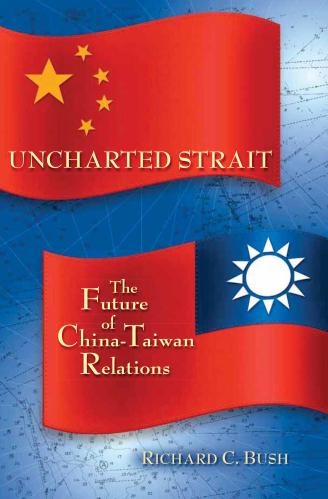
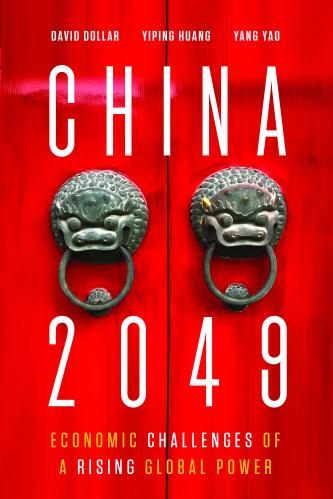
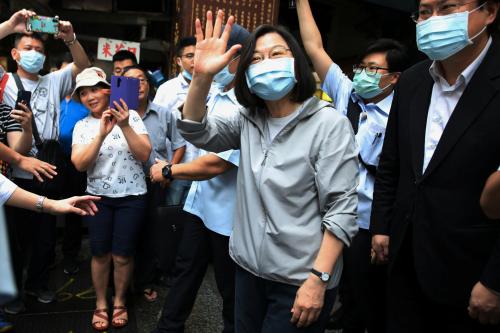
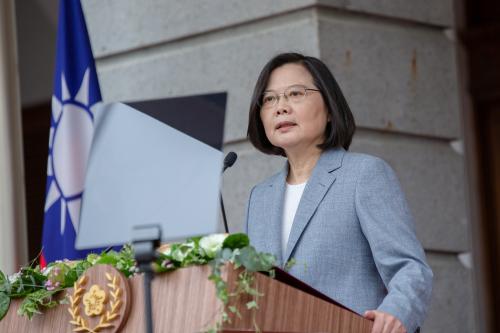
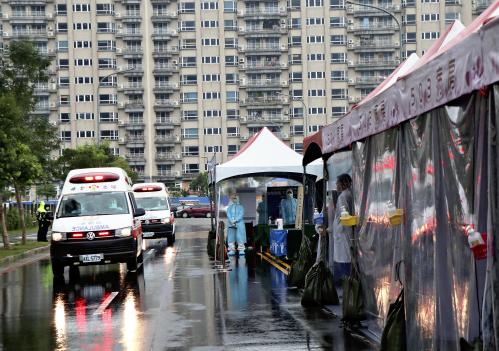
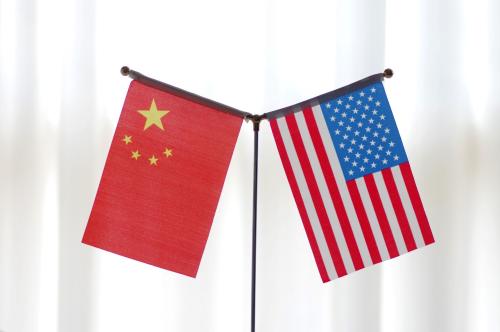
Commentary
Taiwan faces a changed economic outlook in Asia following COVID-19
June 29, 2020